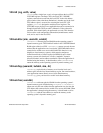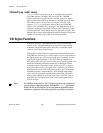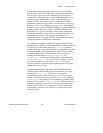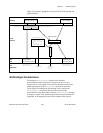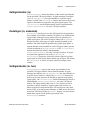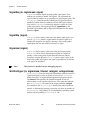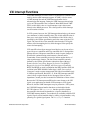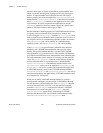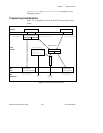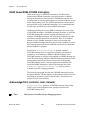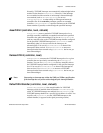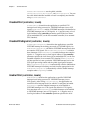
Chapter 3 Software Overview
© National Instruments Corporation 3-41 NI-VXI User Manual
GetSignalHandler (la)
GetSignalHandler
returns the address of the current signal handler
for the specified VXI logical address. If signal interrupts are enabled
(via
EnableSignalInt
), the signal handler for a specific logical
address is called if the
RouteSignal
function has been set up to route
signals to the handler (as opposed to the global signal queue). The
InitVXIlibrary
function automatically installs a default handler,
DefaultSignalHandler
, for every VXI logical address.
RouteSignal (la, modemask)
RouteSignal
specifies how to route VXI signals for the application.
Two methods are available to handle VXI signals. You can handle the
signals either at interrupt service routine time or by queueing on a
global signal queue. For each VXI logical address, the
RouteSignal
function specifies which types of signals should be handled by the
handlers, and which should be queued on the global signal queue. A
separate handler can be installed for each VXI logical address present
(see the description of
SetSignalHandler
). The
InitVXIlibrary
function automatically installs a default handler,
DefaultSignalHandler
, for every VXI logical address. If signals
are queued, the application can use the
SignalDeq
or
WaitForSignal
function to selectively return a signal off a global
signal queue by VXI logical address and/or type of signal. The default
for
RouteSignal
is to have all signals routed to interrupt service
routines.
SetSignalHandler (la, func)
SetSignalHandler
replaces the current signal handler for the
specified VXI logical address with an alternate handler. If signal
interrupts are enabled (via
EnableSignalInt
), the signal handler for
a specific logical address is called if the
RouteSignal
function has
been set up to route signals to the handler (as opposed to the global
signal queue). The
InitVXIlibrary
function automatically installs a
default handler,
DefaultSignalHandler
, for every VXI logical
address. The logical address (la) value of -2 is a special case and is
provided to specify a handler to capture signals from devices not
known to the device information table. This should occur only when
the local CPU is not the Resource Manager or VME devices not listed
in the Non-VXI Device Editor in
VXIedit
. Support is not provided to
handle these signals via the global signal queue or the
WaitForSignal
function.





